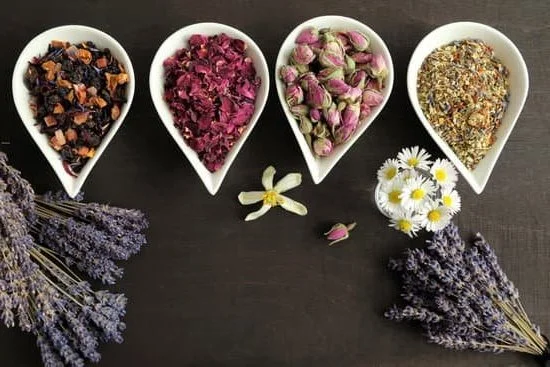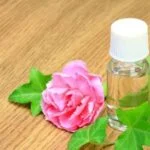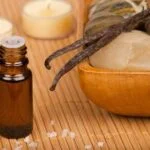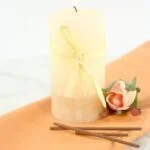Aromatherapy has gained significant popularity in recent years as people seek natural ways to enhance their physical and mental well-being. But what exactly is aromatherapy and how does it work? In this article, we will delve into the basics of aromatherapy and explore its fascinating world.
Aromatherapy can be defined as the therapeutic use of essential oils extracted from plants to promote health and well-being. These essential oils are highly concentrated plant extracts that capture the aromatic compounds responsible for the plants’ unique scents and properties. Through inhalation or topical application, these oils interact with our olfactory system, triggering various physiological responses in the body.
The practice of aromatherapy dates back thousands of years, with ancient civilizations such as Egypt, China, and India using aromatic plant extracts for medicinal purposes. Over time, aromatherapy has evolved to become a holistic healing modality that combines science and art to enhance physical, emotional, and spiritual well-being.
Today, aromatherapy has gained mainstream recognition as a complementary therapy in healthcare settings. Its ability to promote relaxation, reduce stress levels, alleviate pain, improve sleep quality, boost mood, and support overall wellness has made it a popular choice for individuals seeking natural alternatives to conventional medicine.
Join us as we embark on a journey through the world of aromatherapy in this comprehensive guide. We will explore its history and origins, uncover the science behind its healing effects on the body and mind, delve into its myriad benefits for different conditions, discover DIY recipes for customized blends at home, debunk common misconceptions surrounding aromatherapy, and much more.
Whether you are new to aromatherapy or have already embraced its power for your well-being journey, this article is a valuable resource that will leave you inspired and informed about all things aromatherapy.
The Science Behind Aromatherapy
Aromatherapy is not just a pleasant and calming experience, but it also has a scientific basis for its effectiveness. Understanding the science behind aromatherapy can help individuals make informed decisions about its usage and maximize its potential benefits.
The Olfactory System: The Gateway to Aromatherapy
One of the key elements in understanding how aromatherapy works is the olfactory system. When we inhale the aroma of essential oils, tiny airborne molecules enter our nasal passages and stimulate olfactory receptors. These receptors send signals to the brain’s limbic system, which is responsible for emotions, memories, and behaviors.
The limbic system plays a crucial role in how aromatherapy affects our mood and overall well-being. Different essential oils have unique chemical compositions that interact with specific receptors in the brain, triggering various physiological responses. For example, lavender oil contains linalool, a compound known for its relaxing properties, which can help reduce stress and promote better sleep.
Therapeutic Properties of Essential Oils
Essential oils are at the core of aromatherapy, each with its own set of therapeutic properties. These volatile liquids are derived from plants through a process called distillation or cold-pressing. They contain an array of bioactive compounds such as terpenes, phenols, and esters that contribute to their healing effects.
Different essential oils possess distinct therapeutic properties that can address specific concerns. For instance, peppermint oil is known for its analgesic and antimicrobial properties, making it useful for relieving pain and soothing digestive issues. Tea tree oil has powerful antiseptic properties that make it ideal for treating skin conditions such as acne or fungal infections.
Understanding the science behind these essential oils allows individuals to select the right ones based on their desired outcomes. Whether you’re seeking relaxation or pain relief, choosing essential oils with appropriate therapeutic properties is essential for achieving the desired effects.
Benefits of Aromatherapy
Aromatherapy has gained popularity in recent years due to its numerous potential benefits for healing and wellness. One of the key advantages of aromatherapy is its ability to promote relaxation and reduce stress. When the essential oils used in aromatherapy are inhaled, they can stimulate the olfactory system, which is connected to the brain’s limbic system. This connection triggers a release of chemicals that promote a sense of calm and relaxation, helping to alleviate stress and anxiety.
In addition to its relaxation effects, aromatherapy has also been found to have pain-relieving properties. Certain essential oils such as lavender, chamomile, and peppermint have analgesic properties that can help reduce pain and discomfort. These oils can be used topically through massage or added to bathwater for a soothing effect.
Another area where aromatherapy shines is improving sleep quality. Essential oils like lavender, bergamot, and sandalwood have sedative effects that can aid in promoting better sleep. Diffusing these oils in the bedroom or adding them to a bedtime routine can create a relaxing atmosphere conducive to restful sleep.
Furthermore, aromatherapy has shown potential benefits for alleviating headaches and migraines. Studies have found that inhaling certain essential oils like peppermint or eucalyptus can help reduce the intensity and frequency of headache symptoms. These oils can be mixed with a carrier oil and applied topically on the temples or forehead for relief.
Overall, aromatherapy offers a natural and holistic approach to healing and wellness by harnessing the therapeutic properties of essential oils. Whether it’s for relaxation, pain relief, better sleep, or headache relief, incorporating aromatherapy into daily life can be highly beneficial for overall well-being.
Selecting the Right Essential Oils
When it comes to aromatherapy, the selection of essential oils plays a crucial role in achieving desired therapeutic effects. With a wide range of essential oils available, it can be overwhelming to determine which ones are best suited for your specific needs. However, with some guidance and understanding, you can choose essential oils that work harmoniously with your body and mind.
Firstly, it is important to familiarize yourself with the properties of different essential oils. Essential oils are derived from various plants and each oil possesses unique therapeutic benefits. Some popular essential oils include lavender, peppermint, tea tree, eucalyptus, chamomile, and lemon. Lavender oil is known for its calming and soothing properties. Peppermint oil is invigorating and uplifting.
Tea tree oil has potent antimicrobial properties. Eucalyptus oil is commonly used for respiratory issues. Chamomile oil promotes relaxation and sleep. Lemon oil is refreshing and energizing.
To select the right essential oils for yourself, consider your specific wellness goals or concerns. Are you looking to alleviate stress? Improve focus? Boost energy levels? Enhance sleep quality? Address skin issues? Different essential oils have different effects on the mind and body, so choosing ones that align with your desired outcomes will yield the best results.
Another factor to consider when selecting essential oils is personal preference in terms of scent. Aromatherapy relies heavily on our sense of smell to produce therapeutic effects, so it’s important to choose scents that resonate with you personally. Some individuals may find floral scents like rose or ylang-ylang more appealing, while others may prefer citrusy scents like orange or grapefruit.
Once you have identified your desired therapeutic benefits and preferred scents, it’s time to experiment with blending different essential oils together. Blending allows you to create customized aromatherapy blends that address multiple concerns or simply produce a scent combination you enjoy. Keep in mind that blending essential oils requires careful consideration of their individual properties and potency. It is recommended to follow established recipes or consult with a certified aromatherapist to ensure safe and effective blends.
Aromatherapy Techniques
Aromatherapy offers a variety of techniques to enjoy its therapeutic benefits. These methods can be easily incorporated into daily routines, allowing individuals to experience the healing effects of essential oils in different ways. Here are some popular aromatherapy techniques that you can try:
- Diffusers: Using an aromatherapy diffuser is one of the most common ways to enjoy the scents and benefits of essential oils. Diffusers disperse essential oil particles into the air, filling the space with a pleasant aroma. There are several types of diffusers available, including ultrasonic diffusers, nebulizing diffusers, and evaporative diffusers. Each type has its own unique way of dispersing essential oils and may require different dilution ratios.
- Inhalation: Inhalation is another effective method for experiencing the benefits of aromatherapy. This technique involves breathing in the aroma directly from the bottle or by adding a few drops onto a tissue or handkerchief. You can also create a steam inhalation by adding a few drops of essential oil to hot water and inhaling the steam.
- Massage: Aromatherapy massage combines the therapeutic properties of essential oils with the relaxing effects of massage therapy. In this technique, diluted essential oils are applied to the skin through gentle massages. The absorption of these oils through the skin provides both physical and psychological benefits.
- Topical application: Topical application involves applying diluted essential oils directly onto specific areas of the body, such as pulse points or acupressure points. Before applying any essential oil topically, it is important to dilute them with carrier oils like jojoba oil or coconut oil to avoid skin irritation.
When using aromatherapy techniques, it is crucial to practice safety precautions and follow recommended dilution ratios:
- Always dilute essential oils before applying them topically.
- Perform a patch test to check for any sensitivities or allergies to specific essential oils.
- Keep essential oils out of reach of children and pets.
- Follow the recommended dilution ratios provided by reputable sources or consult a qualified aromatherapist.
By using these various methods, individuals can incorporate the benefits of aromatherapy into their daily lives. Whether it is through diffusers, inhalation, massage, or topical application, each technique offers unique ways to promote relaxation, relieve stress, alleviate pain, and enhance overall well-being. Experimenting with different methods of usage will help you find the ones that work best for you and your specific needs.
Incorporating Aromatherapy Into Daily Life
Aromatherapy is not limited to spa treatments or occasional indulgences. It can be easily integrated into everyday routines, allowing individuals to experience its healing benefits on a regular basis.
There are various practical ways to incorporate aromatherapy into daily life, whether it be through skincare routines, creating a relaxing ambiance at home, or using essential oils in hair care. By making aromatherapy a part of your daily routine, you can enhance your overall well-being and create a positive environment for yourself.
One way to incorporate aromatherapy into daily life is by adding essential oils to skincare and haircare routines. Essential oils have various therapeutic properties that can benefit the skin and hair. For example, lavender oil is known for its calming properties and can be added to evening skincare routines to promote relaxation before sleep. Tea tree oil has antibacterial properties and can be added to face cleansers or hair products to combat acne or dandruff.
Creating a relaxing ambiance using aromatherapy is another way to incorporate it into daily life. Diffusers or oil burners can be used to disperse essential oils throughout the room, filling it with their pleasant scent and therapeutic benefits.
For example, citrus scents such as lemon or orange can uplift moods and increase energy levels, making them perfect for starting the day off on a positive note. Lavender or chamomile scents, on the other hand, can help create a serene atmosphere before bedtime.
Using essential oils in household cleaning products is another practical way to incorporate aromatherapy into daily life. While cleaning may not seem like a relaxing activity, adding essential oils such as lemon or eucalyptus to cleaning solutions can make the process more enjoyable and provide an additional boost of freshness in your living space.
| Tip | Idea |
|---|---|
| Add essential oils to your skincare routine | – Lavender oil for relaxation before sleep
|
| Create a relaxing ambiance | – Use diffusers or oil burners to disperse essential oils throughout the room:
|
| Use essential oils in household cleaning products | – Add lemon or eucalyptus essential oil to cleaning solutions for a fresh and enjoyable cleaning experience. |
Aromatherapy for Specific Conditions
Aromatherapy has been found to be beneficial in addressing specific conditions and promoting targeted healing. Many individuals have turned to aromatherapy as a natural and holistic approach to alleviate various ailments and improve overall well-being. In this section, we will explore the usage of aromatherapy for specific conditions and discuss its potential benefits.
One area where aromatherapy has shown promise is in reducing anxiety and depression. Certain essential oils, such as lavender and bergamot, have calming properties that can help relax the mind and reduce feelings of stress and anxiety. These oils can be used in diffusers or diluted with carrier oils for massage. Aromatherapy can also be helpful in improving the mood and promoting a sense of well-being.
Additionally, aromatherapy has been used as a complementary therapy for relieving headaches. Peppermint oil is commonly recommended for its analgesic properties, which may help soothe tension headaches when applied topically or inhaled. Other essential oils such as eucalyptus or rosemary could also provide relief by promoting relaxation and reducing inflammation.
Furthermore, aromatherapy has shown promising effects in improving digestion. Essential oils like ginger and peppermint can be used to alleviate symptoms such as indigestion, bloating, or nausea. These oils can be ingested in small amounts or diluted with carrier oils for topical application on the abdomen.
Overall, aromatherapy offers a natural approach to address specific conditions and promote healing. It is important to note that while it can provide complementary support, it should not replace medical treatment for serious health issues. It’s crucial to consult with a healthcare professional before incorporating aromatherapy into your wellness routine, especially if you have pre-existing medical conditions or are pregnant.
| Specific Condition | Recommended Essential Oils |
|---|---|
| Anxiety and Depression | Lavender, Bergamot, Frankincense |
| Headaches | Peppermint, Eucalyptus, Rosemary |
| Digestive Issues | Ginger, Peppermint, Fennel |
DIY Aromatherapy Recipes
One of the great aspects of aromatherapy is that it allows individuals to create their own custom blends at home. This not only gives you control over the scents and therapeutic properties you desire, but it can also be a fun and creative process. By blending different essential oils together, you can tailor your aromatherapy experience to meet your specific needs and preferences.
To get started with creating your own aromatherapy blends, it’s important to have a basic understanding of the different notes and categories of essential oils. Essential oils are often categorized into three groups: top notes, middle notes, and base notes. Top notes are usually light and refreshing scents that evaporate quickly, such as citrus oils like lemon or bergamot.
Middle notes have a balancing effect on the blend and include floral scents like lavender or geranium. Base notes are deeper and longer-lasting scents such as patchouli or sandalwood.
When combining essential oils, it’s important to consider their individual therapeutic properties as well as how they complement each other in terms of scent. For example, if you’re looking for a calming blend to promote relaxation, you might combine lavender (a middle note) with Roman chamomile (another middle note) to enhance the soothing effects. Experimenting with different combinations and ratios can help you find blends that resonate with your personal preferences.
Once you have created your custom blend, it’s important to properly store and use your homemade aromatherapy products. Essential oils should be stored in dark glass bottles away from direct sunlight to maintain their potency.
When using the blend, remember that essential oils are highly concentrated and should be used sparingly. Start by adding a few drops of your custom blend to a carrier oil like sweet almond or jojoba oil before applying it topically or using it in massage.
Creating your own aromatherapy blends allows for endless possibilities and customization based on individual preferences and needs. Whether you’re looking to create blends for relaxation, energy-boosting, or focus-enhancing purposes, experimenting with different essential oils can be a rewarding and enjoyable experience. By understanding the properties of each oil and how they interact, you can create unique aromatherapy blends that help promote overall wellbeing and enhance your daily routine.
FAQ and Myth Busting
Answering Frequently Asked Questions about Aromatherapy
Aromatherapy has gained significant attention in recent years, but with its rise in popularity comes a multitude of questions. To help provide clarity and promote a better understanding of aromatherapy, this section aims to address some commonly asked questions about the practice.
One frequently asked question is whether aromatherapy can be used as a standalone treatment for physical and mental conditions. While aromatherapy can have therapeutic benefits, it is important to remember that it is not a substitute for medical treatment. Aromatherapy should be viewed as a complementary therapy that can augment conventional medical approaches. It can enhance overall well-being, reduce stress, and promote relaxation, but should not be solely relied upon for serious health conditions.
Another commonly asked question revolves around the safety of using essential oils in aromatherapy. Essential oils are highly concentrated plant extracts and should be used with caution. It is crucial to dilute essential oils properly before use, as direct application may cause skin irritation. Additionally, pregnant women, children, and people with certain medical conditions should exercise caution when using essential oils and seek advice from healthcare professionals before incorporating them into their routines.
Dispelling Common Myths and Misconceptions Surrounding Aromatherapy
With the growing popularity of aromatherapy also comes a fair share of myths and misconceptions. Let’s take a moment to dispel some of these common misconceptions:
One prevalent myth suggests that all essential oils are safe for internal consumption. In reality, most essential oils should not be ingested without guidance from a qualified aroma therapist or healthcare professional. Ingesting certain essential oils can have adverse effects on the body and may interact with medications.
Another misconception is that all essential oils have the same effect on everyone. While certain essential oils may have general benefits like promoting relaxation or enhancing focus, individual responses may vary. Factors such as personal preferences, sensitivities, and overall health can influence the effectiveness of essential oils.
Lastly, there is a misconception that aromatherapy is only effective if you can smell the oils. Although inhalation is a popular method of using aromatherapy, essential oils can also be absorbed through the skin during massage or topical application. Aromatherapy works by stimulating the olfactory system and through direct absorption into the bloodstream when applied to the skin.
By addressing these frequently asked questions and debunking common misconceptions surrounding aromatherapy, individuals can make informed decisions when incorporating aromatherapy into their wellness routines. It is always recommended to consult with professionals for personalized advice and guidance on the safe and effective use of essential oils in aromatherapy.
Conclusion
In conclusion, aromatherapy offers a powerful and versatile approach to enhance overall wellbeing. Throughout this article, we have explored the basics of aromatherapy, its scientific foundation, and the numerous benefits it can provide for our physical and mental health. By understanding how aromatherapy works and selecting the right essential oils, individuals can unlock its potential to improve their daily lives.
Aromatherapy has been praised for its ability to promote relaxation and reduce stress. Its therapeutic effects on pain management and sleep quality also make it a valuable addition to anyone seeking natural alternatives for healing. Additionally, the wide variety of essential oils available allows individuals to personalize their experience based on their specific needs.
There are various methods of incorporating aromatherapy into our daily routines, such as using diffusers, inhalation, or topical application. With safety precautions in mind and knowledge of recommended dilution ratios, individuals can safely enjoy the benefits that aroma therapy brings. Whether it is through creating a spa-like ambiance in our homes or integrating essential oils into skincare or haircare routines, aromatherapy offers countless practical possibilities.
It is important to remember that aromatherapy is not a one-size-fits-all solution. Experimenting with different blends and techniques can help individuals find what works best for them. By embracing the power of aromatherapy and exploring its potential firsthand, readers can take control of their own wellness journey. So go ahead and dive into the world of aromatherapy – your mind and body will thank you for it.
Frequently Asked Questions
How does aromatherapy work on the body?
Aromatherapy works on the body primarily through the inhalation of essential oils. When inhaled, the molecules from these oils stimulate the olfactory system, which is responsible for our sense of smell. This stimulation triggers certain signals to be sent to the brain, including the limbic system which plays a crucial role in regulating emotions and memory.
As a result, aromatherapy can have a direct impact on our mood, stress levels, and overall emotional well-being. Additionally, some essential oils have antibacterial or anti-inflammatory properties that can be absorbed through the skin when used in massage or bath products.
Does aromatherapy have any real benefits?
Yes, aromatherapy has been found to provide various real benefits for both physical and mental health. Research suggests that certain essential oils used in aromatherapy can help alleviate symptoms of anxiety and depression by promoting relaxation and reducing stress levels.
Some oils also possess antimicrobial properties that can help boost immunity or ward off infections when used appropriately. In addition to their potential therapeutic effects on specific conditions, the pleasant scents of essential oils can create a calming and soothing environment, helping individuals relax and unwind.
What are the three types of aromatherapy?
The three main types of aromatherapy are inhalation aromatherapy, topical application aromatherapy, and internal use aromatherapy. Inhalation aromatherapy involves breathing in essential oils directly or using diffusers or vaporizers to disperse the aroma throughout a space. This method allows for quick absorption into the bloodstream through the lungs and provides benefits such as mood enhancement or respiratory relief. Topical application involves diluting essential oils with carrier oils like almond or jojoba oil and applying them directly to the skin through massage or compresses.
This allows for absorption through the skin into the bloodstream, providing targeted relief for muscle pain or skincare issues. Lastly, internal use aromatherapy involves ingesting essential oils under proper guidance from a trained professional who understands dosage requirements and safety considerations associated with internal use. It’s important to exercise caution and only follow recommendations from reputable sources when considering internal use aromatherapy.

Are you looking for a natural way to improve your health and wellbeing?
If so, aromatherapy may be the answer for you.





